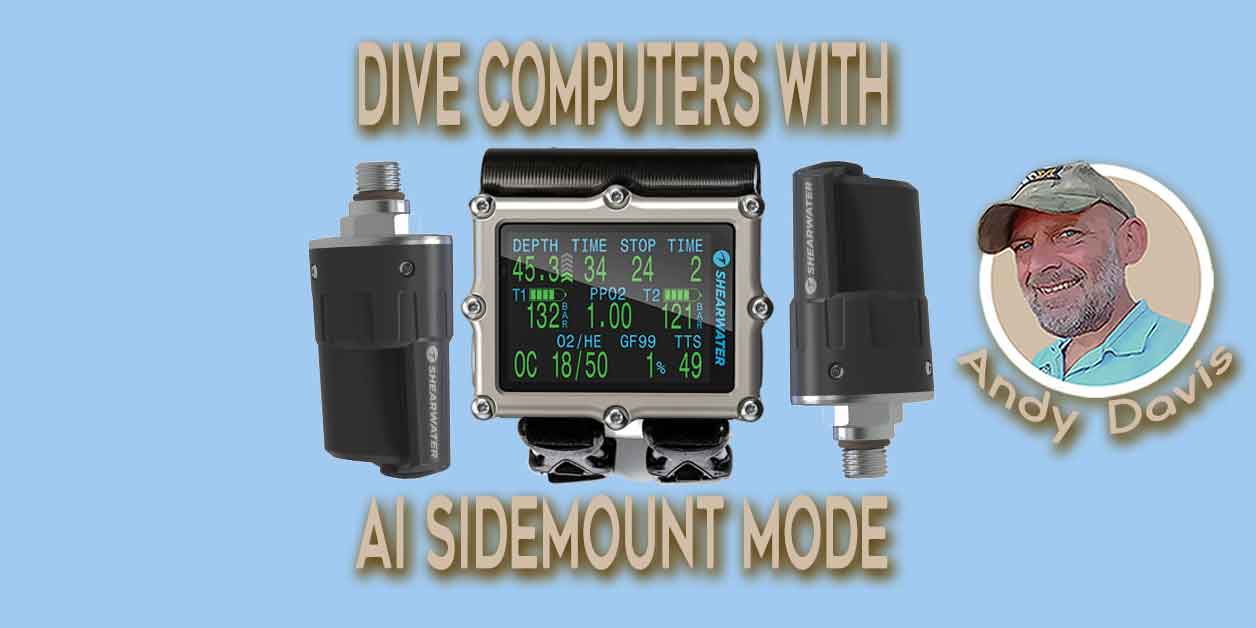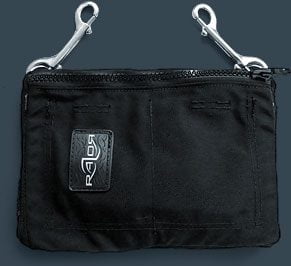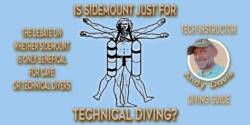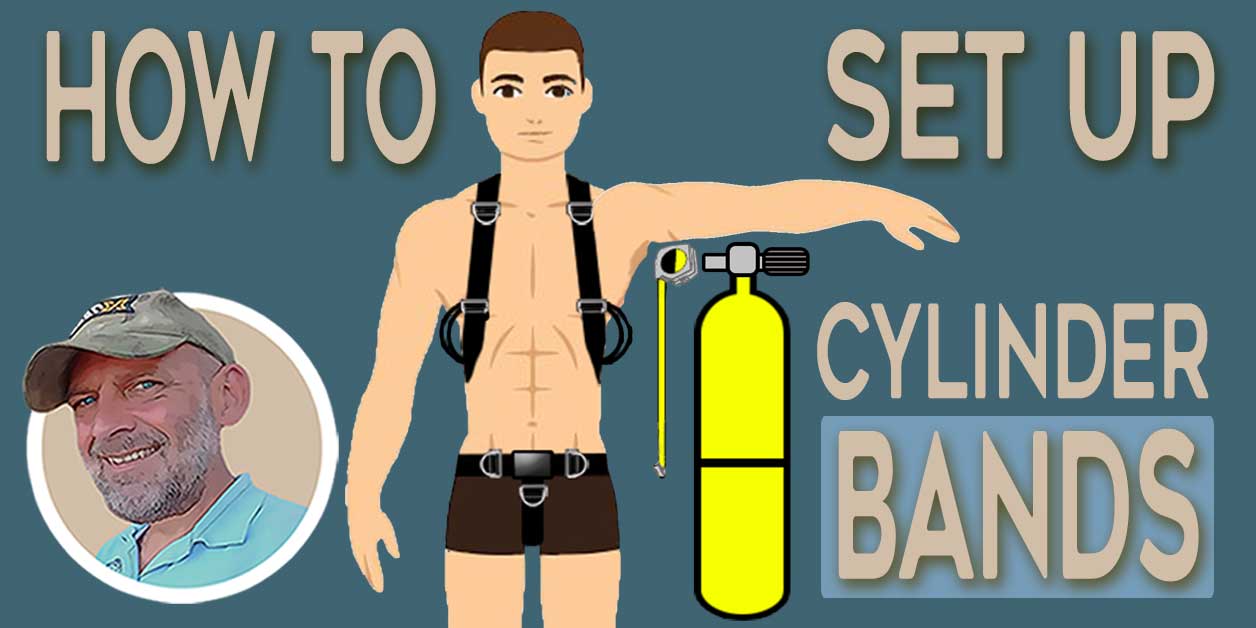What are the benefits of sidemount diving?
Sidemount diving has gained immense popularity among scuba divers over recent years. The benefits of sidemount diving have enabled this approach to dive gear configuration to enter the mainstream.
Sidemount diving involves wearing scuba tanks on the sides of the diver, instead of on their back. The sensation of freedom and weightlessness that sidemount diving provides is similar to freediving, making it a favored choice for many modern recreational, technical, and cave divers.
Sidemount history and current trends
The origins of sidemount diving can be traced back to British sump diving and cave exploration, as it was originally introduced as a way to enable divers to delve deeper into caves and negotiate flooded passages that were previously inaccessible. Over time, it has evolved into one of the most sought-after courses offered by dive training agencies.
Despite initially being dismissed by some as a passing trend, there has been an increasing number of certifications year on year, with a steady growth of around 10% per annum (TDI/SDI certification data 2017/18). This suggests that sidemount diving is definitely here to stay as a mainstream dive gear choice.
Why I personally consider that sidemount diving is best
Sidemount diving offers several advantages over traditional back-mounted dive gear, including better trim and stability, improved streamlining, flexibility of configuration, and increased comfort and safety.
With one cylinder positioned on either side of the diver’s torso, sidemount diving provides a more stable and streamlined diving experience, making it easier to maintain proper trim and buoyancy.
Additionally, sidemount diving does not necessarily require specialized cylinders, making sidemount divers less demanding on dive boats.
Furthermore, the positioning of the valves in front of the diver makes gas shutdowns and leak detection easier, while also reducing strain on the back. Sidemount diving also offers greater mobility and freedom of movement, making it ideal for photographers and divers who prefer the freedom to move and look in different directions.
Another advantage of sidemount diving is its ability to enable easier logistics for technical and cave diving exploration, particularly in remote areas where twinsets and CCR supplies may not be available.
Sidemount is great for cave and wreck divers
The streamlined and efficient configuration of sidemount diving, along with its increased redundancy in gas supply and other life support equipment, makes it the perfect tool for opening up new exploration opportunities for technical and cave divers.
Logistically, sidemount diving is also easier on dive boats, as single cylinders take up less space and are easier to stow and handle compared to twinsets.
Additionally, diving sidemount allows divers to don and doff their equipment in the water, making for a smoother diving experience and avoiding the need to maneuver on the boat.
The benefits of sidemount diving
Let’s take a more detailed look at the benefits of sidemount diving:
1. Improved dive comfort: protecting back injuries
Sidemount diving provides improved comfort for divers by distributing the weight of the scuba tanks evenly on both sides of the body, instead of on the back. This eliminates the stress on the spine and reduces the chances of back pain, allowing divers to enjoy longer dives with ease.
- Sidemount diving is also favored by divers who have back or shoulder injuries, as it offers flexibility to ease the strain of carrying multiple heavy cylinders into and out of the water.
- Because the cylinders are independent, they can be carried individually over several trips.
- In many circumstances, a sidemount diver can choose to don their cylinders in the water; where the tanks are virtually weightless.
As a full-time technical diving instructor, protecting my spine health is a major consideration; especially after decades of wear-and-tear playing rugby, competitive grappling, and arduous military service. Using sidemount equipment as my primary gear choice has become an important factor in staying fit for diving as the years pass by.
2. Benefits of sidemount diving: Streamlining
One of the clearly observed benefits of sidemount diving is that it is far more streamlined than traditional back-mounted diving. The standard scuba gear setup can be unwieldy, bulky and creates undesirable drag when moving through the water.
In contrast, sidemount gear is very streamlined, has low bulk, and is designed to facilitate less water resistance when you are diving.
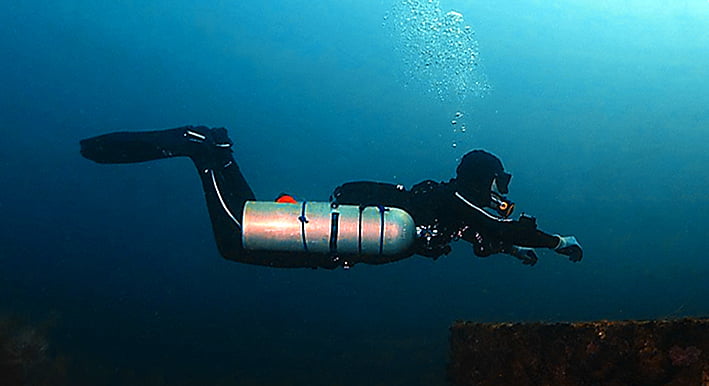
- Streamlining is crucial when it comes to efficiently move through the water. Water is 800 times denser than air, and hydrodynamic drag means that an increase in speed requires a significant increase in muscular and cardio-vascular effort.
- Reducing drag underwater means that you experience less exertion covering a given distance at a given speed. Lowering your exertion has a profoundly beneficial effect on your gas consumption rate.
Diving isn’t just about going fast through the water; improving streamlining and reducing water resistance also empowers more efficient maneuvering. Advanced techniques like helicopter turn, back kick, and modified flutter kick may seem easier and more responsive when using sidemount gear.
3. Intuitive trim and stability
Trim refers to the horizontal orientation of a diver, and good trim is crucial for efficient movement through the water. A sidemount diver is more likely to have correct horizontal trim due to the stabilizing effect of having the cylinders at the sides of the body.
- With sidemount configuration, attaching the cylinders to either side of the torso results in a balanced orientation, regardless of the position of the diver.
- This contrasts with backmount diving where the cylinders are mounted on the back, higher above the divers’ center of gravity, making it difficult to maintain balance when maneuvering.
As a sidemount instructor, I observe students of all diving proficiency levels master trim, buoyancy, control, and stability very easily in comparison to teaching students in backmount.
One of the benefits of sidemount diving is that the equipment works with you, rather than against you.
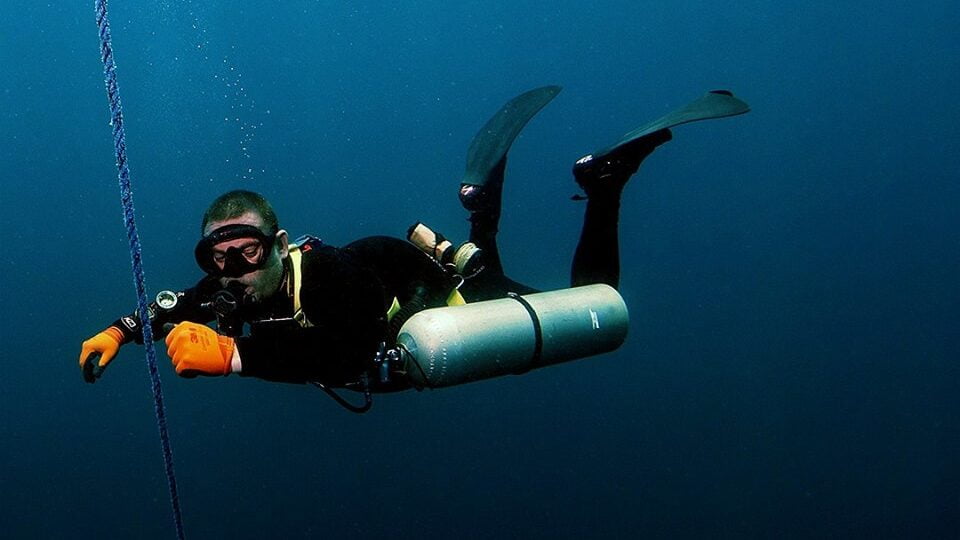
- Stability is a result of trim, balance, and buoyancy control. If properly trained, sidemount diving provides stability, allowing divers to relax and hold a specific position in the water column.
- This is especially important when diving in overhead environments like caves or wrecks or during decompression diving, where holding a specific depth is necessary.
My sidemount ebook contains a detailed chapter on the principles that need to be understood to properly configure sidemount gear for intuitive trim and natural stability:
Buy my ‘Sidemount: Principles For Success’ ebook now!

My comprehensive guide to sidemount configuration and development as a diver.
178 Pages. PDF format. Only $25
Fully Illustrated!
Chapters include:
- Sidemount history, design styles, and cylinder principles
- Harness and bungee setup and sizing
- Configuring deco/stage cylinders
- Diagnosing cylinder trim problems
- Regulators and hardware
- Training and skillset development
4. Benefits of sidemount diving: Gas management
Sidemount diving provides easier gas management during dives, as the cylinders are mounted on the sides of the body, SPGs and cylinder valves are very accessible.
This makes it easier for divers to consistently monitor their gas levels, manipulate the valves, inspect for leaks, deal with regulator failures, and prevent gas supply loss.
As sidemount cylinders are easily detachable, divers always have the option to donate or receive entire tanks from their buddy or teammate.
Increased gas supply
One of the biggest benefits of sidemount diving is that it can literally double the amount of gas carried on a dive.
For recreational divers, carrying two tanks instead of one provides access to a far larger gas supply during a dive. This can be particularly beneficial for divers who suffer from high air consumption or those with ambitions to enjoy longer dives.
Sidemount diving is particularly generous in extending dives times when combined with nitrox.
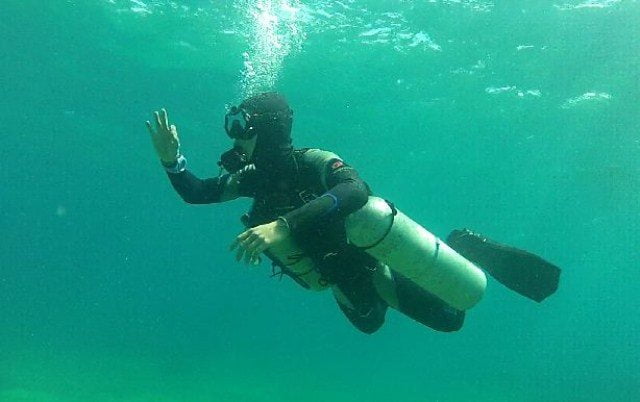
Gas supply redundancy
Having two completely independent sidemount cylinders and regulator systems is immensely reassuring; especially for deep and wreck diving.
A sidemount diver can suffer a complete and catastrophic failure on one cylinder and still retain an ample gas supply to surface safely.
The same scenario would be a major emergency for a single-tank recreational diver; requiring gas donation from a buddy or, at worst, a desperate race to the surface.
Totally independent gas redundancy is one of the primary benefits of sidemount diving.
For technical, cave, and advanced wreck penetration divers, having totally independent gas system redundancy completely eliminates the risk of catastrophic manifold failures. In the absolute worst-case scenarios, divers can only lose half of their gas supply. With proper gas planning, they should always be able to survive major gas failures with the remaining functional cylinder.
Gas emergency management and safety
Sidemount gear does not commonly provide a cylinder manifold function; which means that the diver loses access to a shut-down cylinder.
However, high-quality sidemount training teaches divers to utilize the accessibility of cylinder valves to perform a “feather breathing” technique whenever the gas supply of a shut-down cylinder may be required.
This technique involves opening the cylinder valve momentarily when inhaling and then shutting the cylinder down again until the next breath is required.
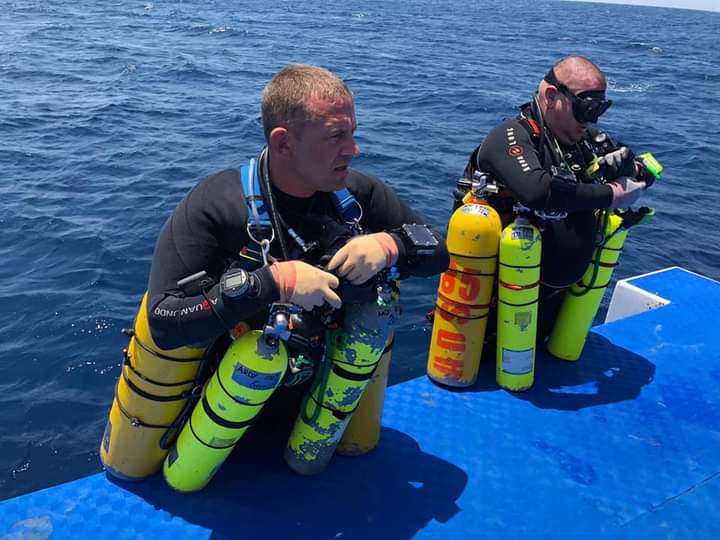
In the worst-case scenarios, sidemount divers also retain the option of swapping their regulators between cylinders. Whilst this necessitates a regulator service later, it means that a sidemount diver always has access to all of the gas they carry.
5. Accessibility in confined environments
Sidemount diving was invented as a solution for accessing very confined environments and passing through restrictions in sump and cave diving.
With cylinders located on the sides of the body, a sidemount diver has a very low profile and this enables the diver to explore areas where back-mounted dive gear would simply never fit.
The ability to explore previously inaccessible areas within my local shipwrecks was the reason why I first experimented with sidemount diving over a decade ago. It opened up a vast range of new opportunities and shipwrecks which I had already dived hundreds of times suddenly became exciting and novel again. For me, that is a priceless capability. I only discovered the other benefits of sidemount diving as I grew more proficient and experienced using it; there were a lot fewer online resources about sidemount diving back then!
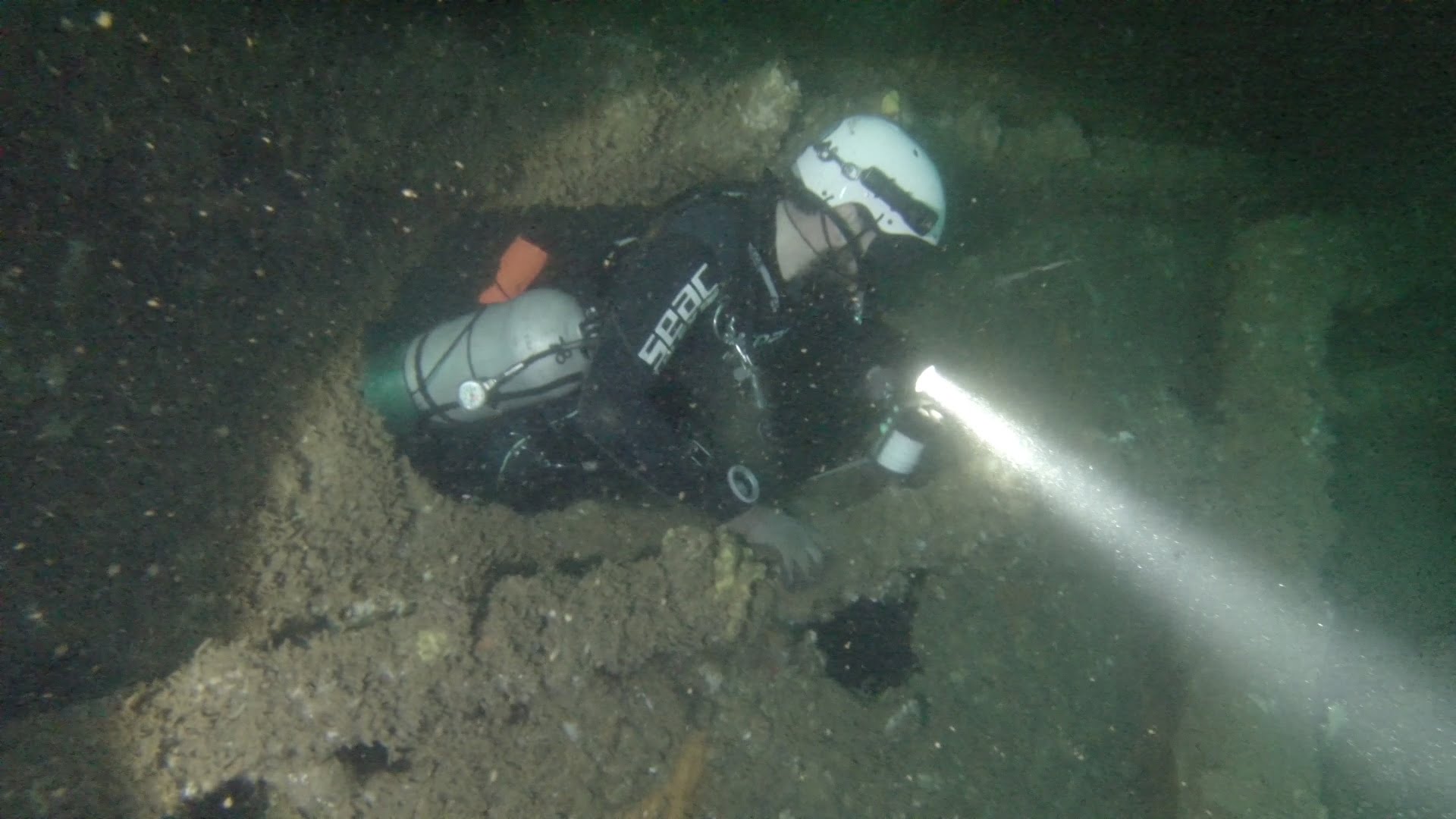
6. Benefits of sidemount diving: Customizable gear setup
The modular nature of sidemount gear gives divers the opportunity to customize sidemount gear configuration specifically to suit their individual diving needs and preferences.
One of the benefits of sidemount diving is that there is a wide range of different sidemount systems available to buy, and some are specialized to be optimal for cold or warm water diving, steel or aluminum cylinders, open ocean or cave environments, and technical or recreational diving.
Sidemount divers have innovated varying approaches to regulator and hose configuration. Different hardware components are available to customize and upgrade basic sidemount harnesses.
Sidemount wings come in a wide variety of sizes, buoyancy capacities, and shapes; all being factors that influence how effectively a sidemount rig performs for specific diving needs.
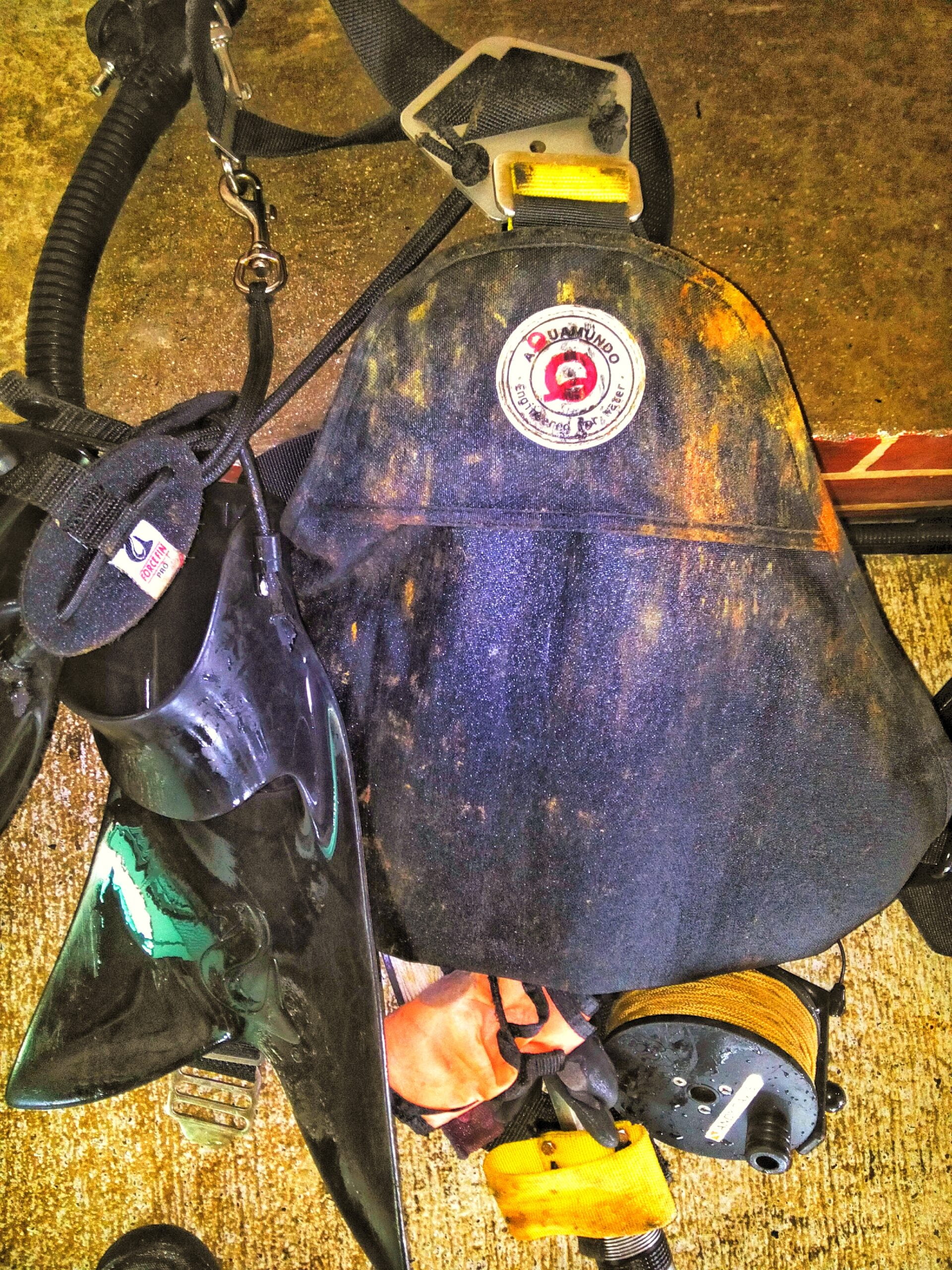
7. Benefits of sidemount diving: Gear transportation
Sidemount BCD systems are far less bulky and much more lightweight than single-tank backmount BCDs and double-tank wings with a backplate.
It is possible to squeeze most sidemount BCDs into carry-on luggage, such as a daysack, if necessary.
- This is a huge benefit for traveling divers; for whom carrying heavy dive gear can dramatically increase the cost of air travel.
- The lightweight nature of sidemount gear is also a big benefit for cave divers who may have to trek and hand-carry their dive gear to remote sites in less accessible locations.
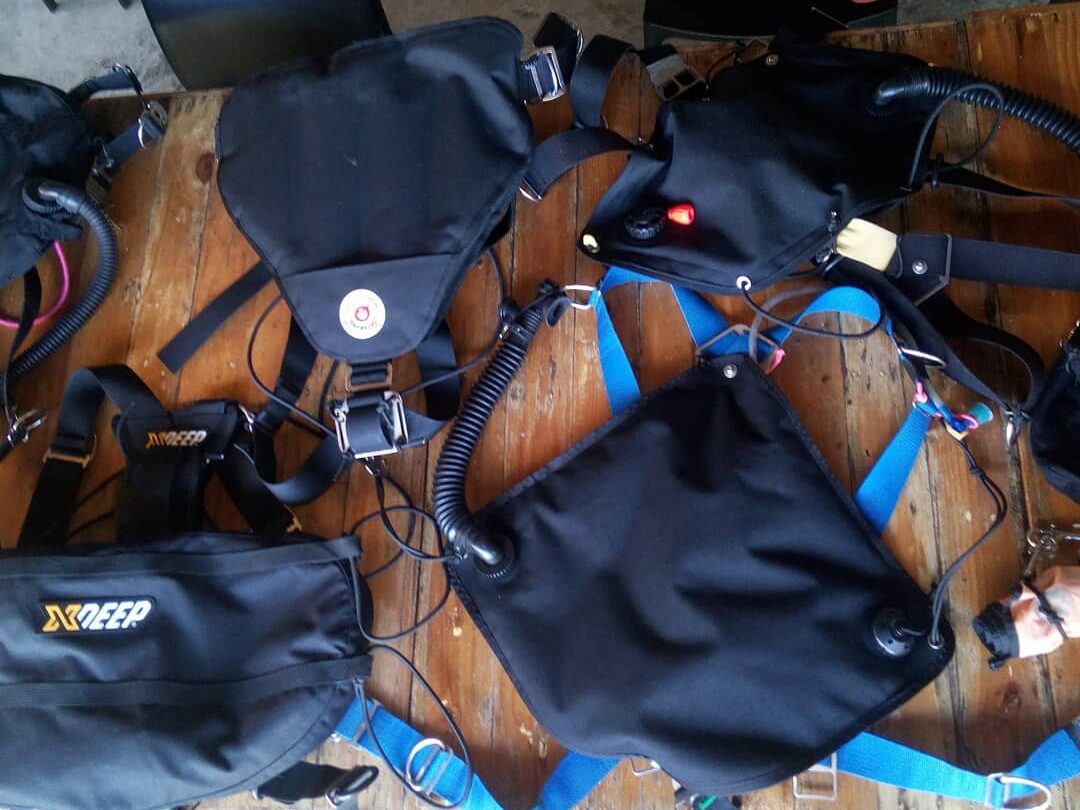
What are the disadvantages of sidemount diving?
Obviously, whilst there are appreciable benefits of sidemount diving, there are also disadvantages, and it would be disingenuous to ignore them. The following factors are sometimes suggested to be drawbacks to diving with sidemount gear.
1. Gas management complexity
One challenge is the more complex gas management, requiring divers to frequently switch between regulators to maintain balanced cylinder pressures for emergency management.
That can seem daunting to less experienced divers and certainly does add to task loading during a dive. As with all things, as experience increases and if skills are diligently practiced, the process of balancing sidemount tank gas pressures becomes an unconscious process.
When I teach sidemount courses, my students quickly ingrain this skill and by the time they are certified cylinder pressure management happens automatically throughout their dives.
2. Cylinder limitations
For technical and cave diving, determining the maximum practical number of sidemount cylinders can be subjective.
Personally, I find six cylinders to be the limit for comfortable sidemount diving – which is sufficient for most dives down to hypoxic trimix levels.
As I dive primarily in the tropics, I am limited to aluminum cylinders, AL80 and AL100, so my selection is usually two primary tanks, an additional stage of bottom gas, one cylinder of travel gas, and two deco cylinders.
In temperate and cold water regions, higher-capacity steel cylinders would be an option; potentially allowing fewer cylinders to be used for comparative dives.
Beyond six cylinders, I would elect to dive closed-circuit rebreather (CCR); if for no other reason than the cost of helium on deeper dives.
3. Sidemount gear setup complexity
Sidemount diving absolutely requires much more principled knowledge and attention to detail during setup and configuration.
When teaching sidemount courses, I find that equipment configuration and gear setup is a major focus of the training. It takes a disproportionate amount of time compared to setting up a backmount wing system.
However, once sidemount gear is optimally configured, the in-water skills, drills, and protocols are much easier to learn and ingrain than backmount doubles.
4. Boat diving problems
Some divers suggest that diving from boats can be challenging while in a sidemount configuration. This is particularly relevant when diving from larger boats where entering the water before donning cylinders can be problematic.
As with all things, such problems usually depend upon the individual diver’s depth of training, overall diving experience and proficiency, and ability to problem-solve and adapt to different diving conditions.
I have seen effective techniques utilized to make diving from bigger boats easier; although you cannot beat the simplicity and ease of entering the water before attaching cylinders if that is possible.
Is sidemount diving better?
Backmount and sidemount diving each have their own advantages and disadvantages.
While I have primarily dived sidemount for well over a decade, I also dove backmount tech configurations for many years before converting. I do not believe sidemount is necessarily the best option for every diver.
At the same time, I have strong and defensible objections when some divers claim that sidemount cannot, or should not, be used for this or that type of diving; or when they claim that X or Y is categorically better than the other.
Be wary of opinionated divers with little sidemount experience
Typically, strong black-and-white opinions are just knee-jerk assumptions that arise from inexperience. At worst, they can be ego-defensive behavior that unconsciously seeks to mask or evade accepting one’s own improficiency in a specific area of expertise.
If a diver has amassed significant experience and fluid competency in one particular diving equipment configuration it is unsurprising that they would find a different approach less immediately familiar.
It takes time and practice to transition between different types of dive gear, so it is wrong to judge an approach as problematic if the real issue is a lack of diver familiarity. Pride and deficit self-awareness can cause some divers to make that mistake.
The reality is that preference for sidemount or backmount diving depends on the individual diver.
- For smaller divers, sidemount diving may be the more manageable option.
- It is a very beneficial choice for those who suffer from back problems.
- It is a great option for cave or technical divers who travel frequently and/or visit more remote areas. It is an empowering choice for recreational divers who have high air consumption.
On the other hand, backmount gear is simple to configure, lends itself to problem-free water entries, and enables higher-capacity cylinders to be used without special considerations.
DIR and hogarthian backmount configuration principles have been widely adopted amongst the tech and cave community; so backmount doubles can be very easily incorporated into a diving team that wants consistency and standardization of protocols and procedures.
The pros and cons of sidemount dive gear
Pros of sidemount diving configuration:
- Increased comfort and mobility
- Better control of weight distribution
- Easy to monitor and access equipment and gas systems
- Minimal water resistance
- Low weight and bulk
- Does not require specialist cylinders
Cons of sidemount diving configuration:
- More complex setup
- Additional gas management demands
- Limited gas/cylinder capacity
- Water entry from large boats can be problematic
The pros and cons of backmount dive gear
Pros of backmount doubles diving configuration:
- A more commonly understood option
- Widely available training and equipment
- Potentially more cylinder capacity
- Simplistic water entry
Cons of backmount doubles diving configuration:
- Reduced mobility and flexibility
- Increased drag in the water
- Difficult to manipulate cylinder valves
- Reduced options to pass through restrictions
- Heavy and bulky for travel
- Requires dive operators to supply banded manifold cylinders
Ultimately, the choice between backmount and sidemount diving comes down to personal preference, body type, regional diving practices, and the diving activities undertaken. While backmount is the traditional choice and the necessary training is more accessible for those new to technical or cave diving, sidemount has unique advantages and appeals that may dictate a diver’s preference.
Choosing the right diving gear configuration has to be a personal decision that should be made after careful consideration once fully informed of the facts.
Conclusion: The benefits of sidemount diving
In conclusion, sidemount diving has come a long way from its roots in sump diving and cave exploration and has evolved into a popular diving configuration that offers a range of benefits to divers, recreational and technical.
With the right training and equipment, the benefits of sidemount diving make it a versatile and efficient dive gear configuration that is here to stay.
Have you tried sidemount diving? Share your comments and experiences in the comments section at the bottom of this article!
About The Author

Andy Davis is a RAID, PADI TecRec, ANDI, BSAC, and SSI-qualified independent technical diving instructor who specializes in teaching sidemount, trimix, and advanced wreck diving courses.
Currently residing in Subic Bay, Philippines; he has amassed more than 10,000 open-circuit and CCR dives over three decades of challenging diving across the globe.
Andy has published numerous diving magazine articles and designed advanced certification courses for several dive training agencies, He regularly tests and reviews new dive gear for scuba equipment manufacturers. Andy is currently writing a series of advanced diving books and creating a range of tech diving clothing and accessories.
Prior to becoming a professional technical diving educator in 2006, Andy was a commissioned officer in the Royal Air Force and has served in Iraq, Afghanistan, Belize, and Cyprus.
In 2023, Andy was named in the “Who’s Who of Sidemount” list by GUE InDepth Magazine.
Purchase my exclusive diving ebooks!
Sidemount FAQs
Sidemount diving involves carrying tanks on the sides instead of the back, providing more flexibility and easier access to equipment.
Sidemount diving offers improved streamlining, better maneuverability, and easier access to valves, leading to a more comfortable and enjoyable dive.
Sidemount diving allows for better buoyancy control and a more balanced body position, reducing fatigue and minimizing strain on the back.
Sidemount divers use a specially designed harness, wing, and regulators, which allow for more comfort and flexibility in movement underwater.
Sidemount diving is ideal for cave, wreck, and technical diving, as well as divers with physical limitations, and those seeking to improve their bottom time.
Sidemount training involves learning proper gear assembly, equipment operation, and safety protocols, typically requiring a few days of instruction.
Sidemount diving can be learned by beginners, with courses available to open water divers. Finding a specialist instructor is important.
Sidemount diving may decrease air consumption due to increased streamlining and greater mobility, it can also lead to longer dive times with proper training.
Sidemount diving is popular in locations such as Florida Springs, Mexico’s Yucatan Peninsula, and the caves of Thailand, among others.
Sidemount diving allows for easier access to equipment and valves, improving emergency response efficiency.
Some misconceptions about sidemount diving include the idea that it’s only for technical diving or cave diving, when in fact it can be used for a variety of diving situations with proper training.
Originally posted 2023-03-09 19:00:44.









